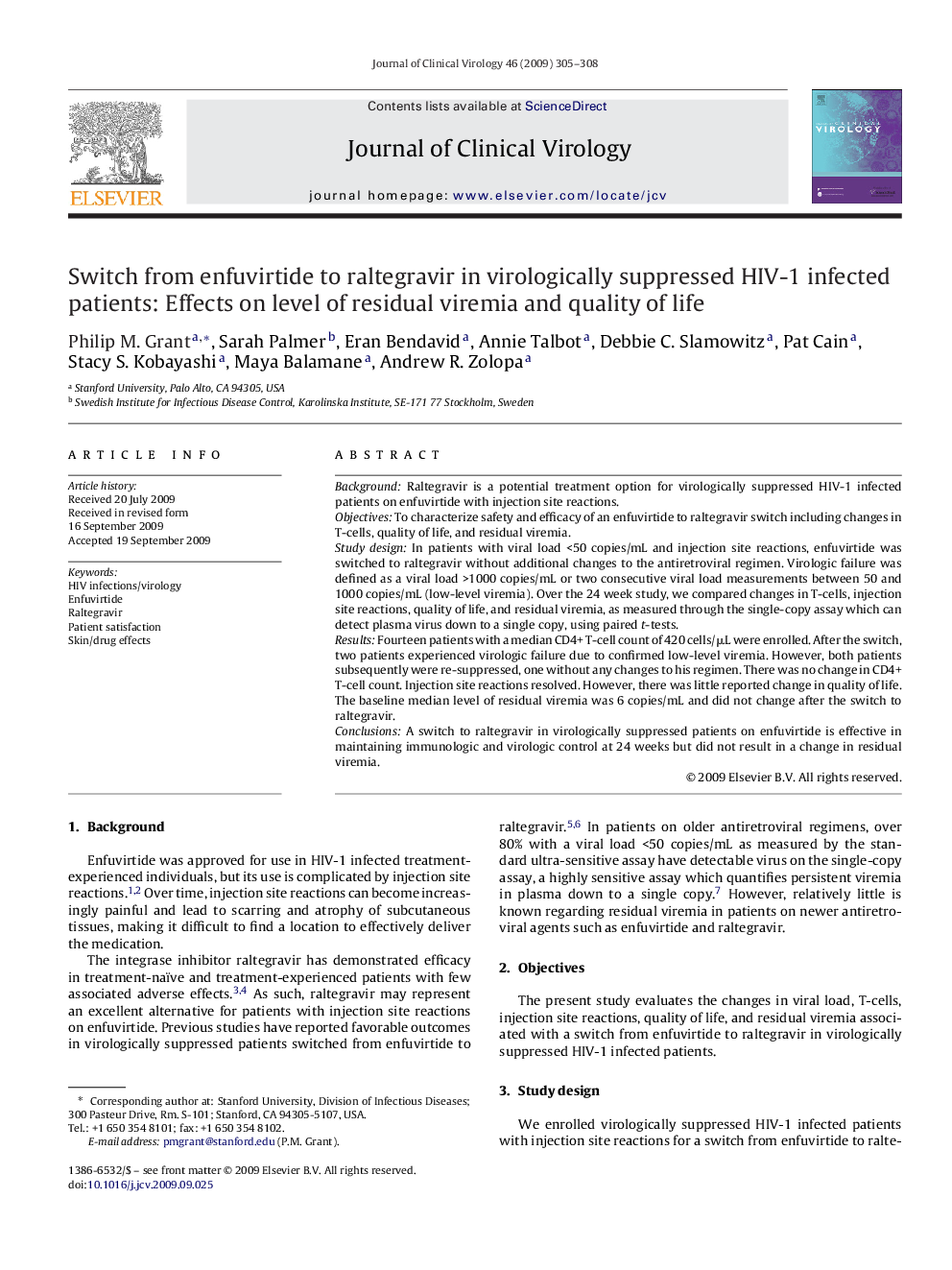| Article ID | Journal | Published Year | Pages | File Type |
|---|---|---|---|---|
| 3369697 | Journal of Clinical Virology | 2009 | 4 Pages |
BackgroundRaltegravir is a potential treatment option for virologically suppressed HIV-1 infected patients on enfuvirtide with injection site reactions.ObjectivesTo characterize safety and efficacy of an enfuvirtide to raltegravir switch including changes in T-cells, quality of life, and residual viremia.Study designIn patients with viral load <50 copies/mL and injection site reactions, enfuvirtide was switched to raltegravir without additional changes to the antiretroviral regimen. Virologic failure was defined as a viral load >1000 copies/mL or two consecutive viral load measurements between 50 and 1000 copies/mL (low-level viremia). Over the 24 week study, we compared changes in T-cells, injection site reactions, quality of life, and residual viremia, as measured through the single-copy assay which can detect plasma virus down to a single copy, using paired t-tests.ResultsFourteen patients with a median CD4+ T-cell count of 420 cells/μL were enrolled. After the switch, two patients experienced virologic failure due to confirmed low-level viremia. However, both patients subsequently were re-suppressed, one without any changes to his regimen. There was no change in CD4+ T-cell count. Injection site reactions resolved. However, there was little reported change in quality of life. The baseline median level of residual viremia was 6 copies/mL and did not change after the switch to raltegravir.ConclusionsA switch to raltegravir in virologically suppressed patients on enfuvirtide is effective in maintaining immunologic and virologic control at 24 weeks but did not result in a change in residual viremia.
